Geology Reference
In-Depth Information
are sometimes considered characteristic of pahoehoe flows but are much less
common than smooth crusts and small lobes which form from break-outs on the
flow surface.
Aa flows
(Figure 4.5b) have rough clinkery and spinelike (spinose)
surfaces reflecting tearing apart of fragments of the solidified crust on the top
of lava, that is more viscous than that forming pahoehoe flows.
Both pahoehoe and aa lava surfaces may occur upon the same lava flow,
changing from pahoehoe near to the vent to aa further downslope. Also variations
between the two have been termed blocky pahoehoe. It is thought that subtle
changes in the amount of microlites (small crystals) can dramatically change
the viscosity of the lava moving it from a pahoehoe to aa type of flow.
4.3.2 Internal structures
It is particularly important to look at sections through lava sequences in the field.
In thick sequences of basaltic flows one can recognise different volcanic facies
based on their internal structures and the way in which the different lava units
build up the volcanic stratigraphy (for example, Figure 4.6). In general subaerial
lavas have an internal structure which varies from a lower to central core part
and a minor lower and thicker upper crust region. These zones represent the
well de-gassed inflated core region and the fractured and vesicular rich crust
units which develop during emplacement (see Figure 4.2).
Figure 4.6
Examples of key volcanic facies found in flood basalts (thick
sequences of predominantly basaltic lavas). Facies can be mapped out from flow
to flow, but some of the facies associations may not be fully realised until the
whole sequences has been mapped out in detail.

















































































